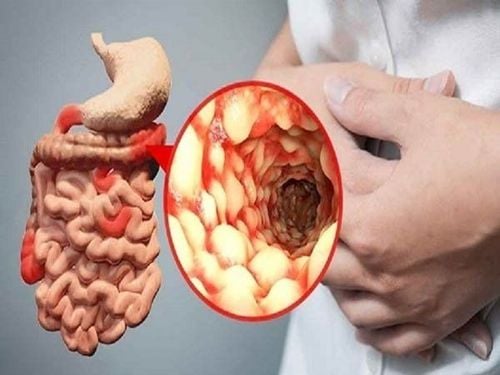This is an automatically translated article.
Posted by Doctor Ma Van Tham and Doctor Nguyen Nam Phong, Department of Pediatrics - Neonatology - Vinmec Phu Quoc International General Hospital.Screening is the use of simple, easy-to-implement methods that do not affect health, to identify individuals at high risk for a certain disease. For ease of visualization, we can take the image of a sieve. After the screening test, the majority of individuals will pass the sieve (low risk), and a small fraction will remain on the sieve. Those individuals are considered to be at high risk for the diseases being screened.
1. Newborn screening
Newborn screening includes newborn screening tests to find and identify babies at high risk for a medical condition in the newborn screening program. If the child is detected in time, early intervention treatment will help the child develop normally. Whether a baby is born in a hospital, maternity home, or at home, a blood sample from a baby's heel should be collected between 2-6 days after birth. Depending on the results of the screening, your child may be asked to have further tests. Therefore, it is necessary to provide enough information so that doctors can contact to consult and monitor the health of children in case of necessity. 1.1 Difference between screening test and diagnostic test Screening test only helps to determine if the risk of disease is high or low. Some children are identified as having a high risk of a certain disease, but in fact they do not (false positive), and conversely, some children are identified as having a low risk but in fact the child has the disease again (false negative). After the screening test, children who are determined to be at high risk for the disease will be asked to have a diagnostic test to determine for sure if the child is carrying the disease. The new diagnosis is the final conclusion about the child's medical condition. If the child is required to have additional tests after screening, the family should urgently follow the doctor's instructions.

Sàng lọc sơ sinh nên được thực hiện giúp xác định nguy cơ mắc bệnh
1.2 Why should babies participate in newborn screening? Screened diseases often go undetected before birth, however, these diseases can cause serious damage to multiple organ systems, especially the brain, nervous system, and/or can cause serious health problems. cause death in children if not treated promptly. Because symptoms are often not easily recognized after birth, newborn screening is the only way to detect these conditions before permanent damage can appear. Early treatment can help your child grow as healthy as possible. These diseases often cannot be completely cured. If the disease is detected early and the child is treated promptly, serious health problems can be prevented or minimized. If the treatment is continued, long-term, most children can grow up, develop normally, and be healthy.
2. Diseases screened at Vinmec Phu Quoc
2.1. Basic diseases screened
2.1.1. G6PD enzyme deficiency disease G6PD enzyme deficiency causes hemolysis, mild to severe anemia.
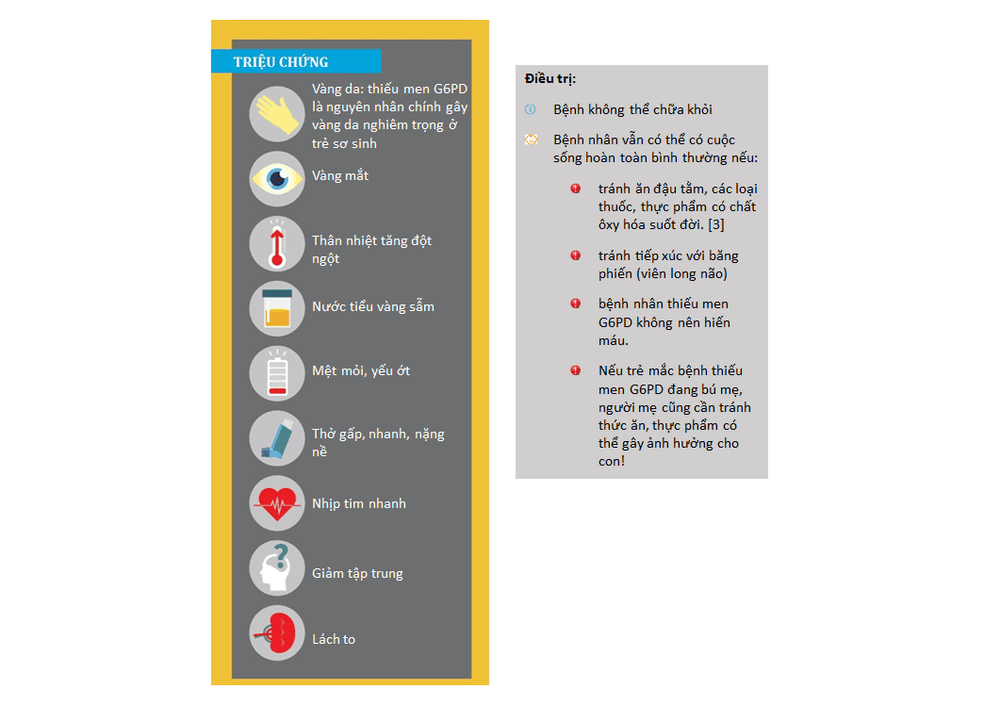
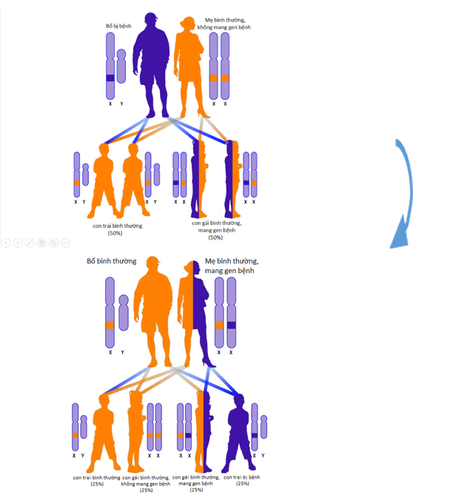
Cơ chế di truyền gen lặn nằm trên nhiễm sắc thể giới tính X của bệnh thiếu enzyme G6PD.
Glucose-6-phosphate dehydrogenase (G6PD) deficiency is the most common of all diseases caused by enzyme deficiency. G6PD deficiency affects nearly 400 million people worldwide. G6PD deficiency is an inherited disease caused by a recessive gene linked on the X chromosome. Males have only 1 X chromosome, so the disease occurs more commonly in men.
2.1.2 Congenital hypothyroidism (CH) Congenital hypothyroidism is a disease that occurs because the thyroid gland does not produce enough hormones (hormones) to meet the body's needs, delay the physical and mental development of children. The disease occurs with an rate of about 1/3000 - 1 in 4000 newborns, is one of the most common causes of mental retardation in young children. Treatment:
Principles of treatment: take hormone replacement for life and must be examined by an endocrinologist for regular and long-term follow-up. Children with congenital hypothyroidism still have a normal diet.
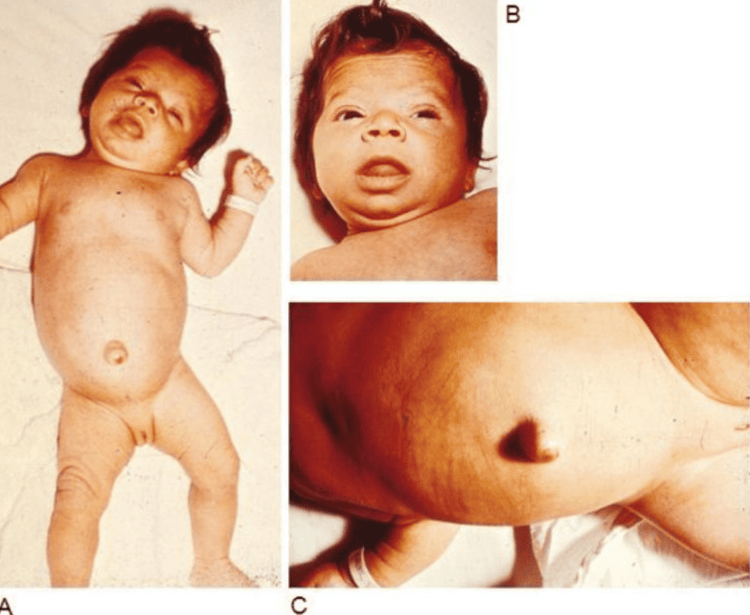
Hình ảnh trẻ mắc bệnh suy giáp bẩm sinh (CH)
2.1.3. Congenital adrenal hyperplasia (CAH) This disease causes virilization, early puberty, and severity that can lead to salt loss, shock and even death. Congenital adrenal hyperplasia (CAH) is a genetic predisposition. The word “hyperplasia” means excessively large. Children with CAH have adrenal glands that are larger than normal. The adrenal glands are a pair of triangular organs, located on the kidneys, close to the back wall of the abdominal cavity, secreting many important hormones to the body, including hormones: Cortisol (antibody hormone). inflammation) Aldosterone (salt-retaining hormone) Androgen: is a group of hormones that regulate growth. The adrenal glands are controlled by the pituitary gland located in the pituitary fossa on the base of the skull. When the adrenal glands don't produce enough cortisol, the pituitary gland releases the adrenal-stimulating hormone ACTH to require more production. In children with CAH, due to a disorder of enzyme synthesis (eg, 21-hydroxylase ) in the adrenal gland, the adrenal gland does not produce enough Cortisol for the body. Cortisol deficiency in the body leads to an increase in ACTH secretion from the pituitary gland, which stimulates the adrenal glands to produce more Cortisol. As a result, the adrenal glands become overactive and become enlarged (hyperplasia).
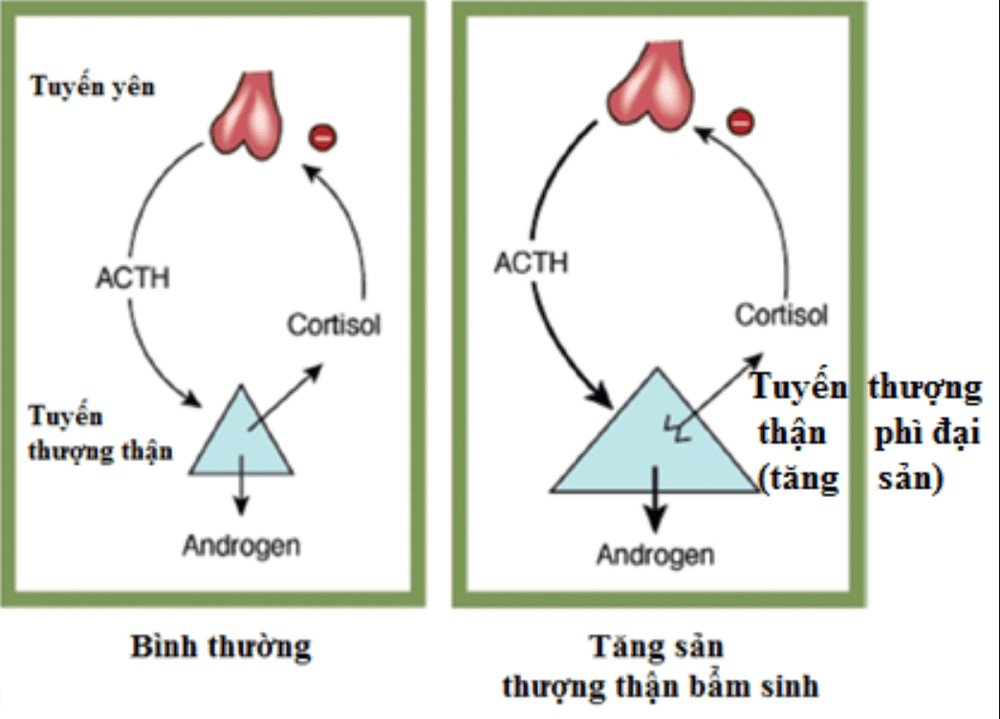
Hình 6. Cơ chế điều hòa hoóc-môn tuyến yên
Children with CAH: Lack of cortisol Lack of salt-retaining hormone: dehydration and lack of salt in the body. Excess testosterone: early puberty, virilization in girls. People with congenital adrenal hyperplasia remain in good health if treated and thus have a good chance of developing normally. Treatment
CAH is a lifelong disease, there is no definitive cure, cannot replace enzymes. However, hormone replacement therapy is possible. This treatment must be strictly followed daily, for life.
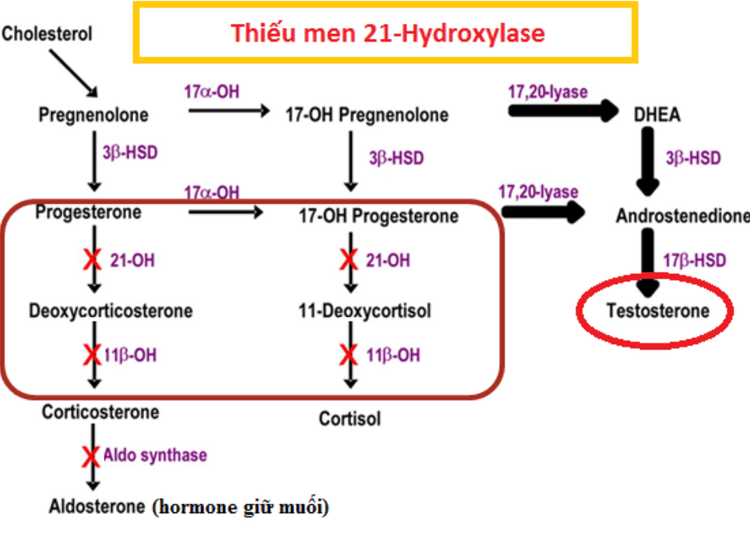
Hình 7. Ảnh hưởng của thiếu enzyme 21 hydroxylase tới chu trình chuyển hóa, làm giảm nồng độ cortisol, hoóc-môn giữ muối và tăng nồng độ testosterone trong cơ thể

Khách hàng sử dụng gói dịch vụ thai sản trọn gói tại Vinmec
MORE:
Benefits of newborn screening Prenatal and newborn screening: What you need to know Newborn screening tests should be done soon after birth










